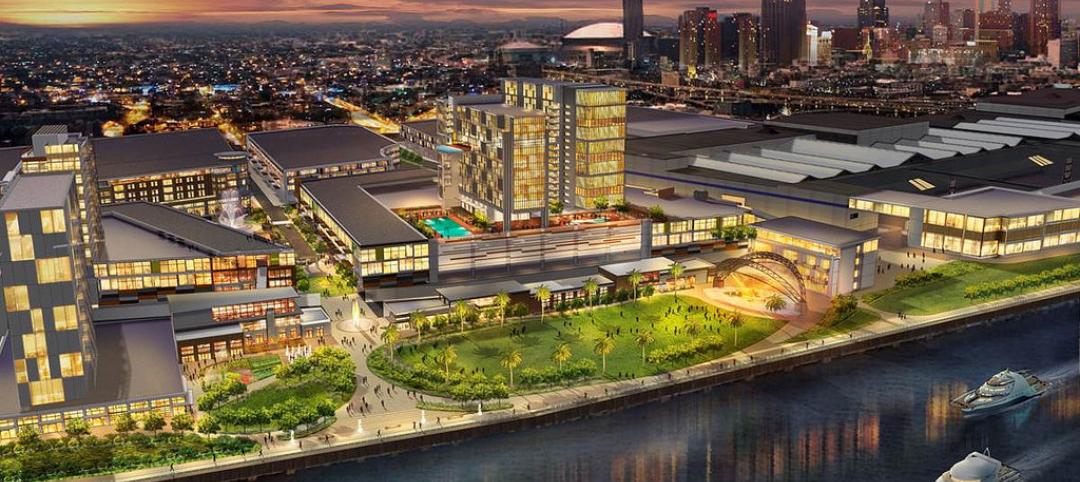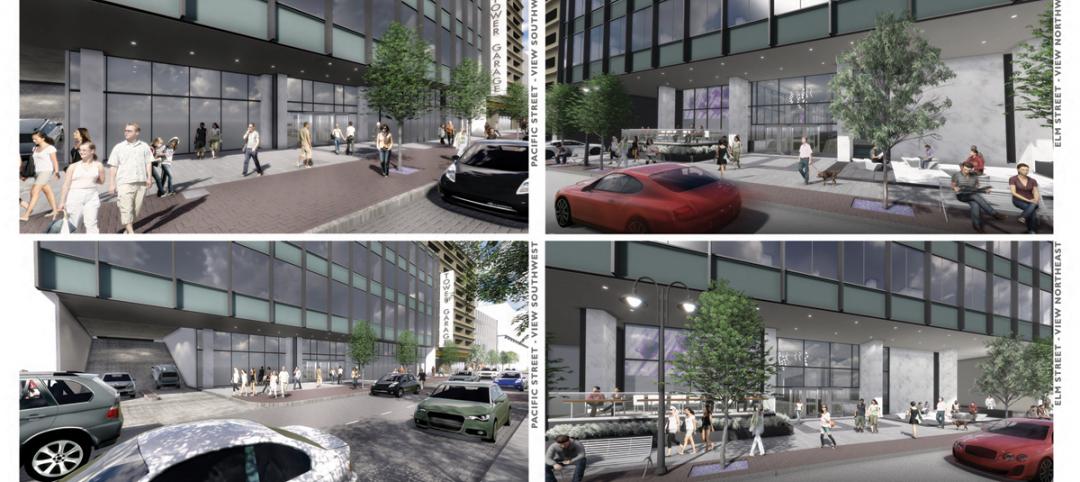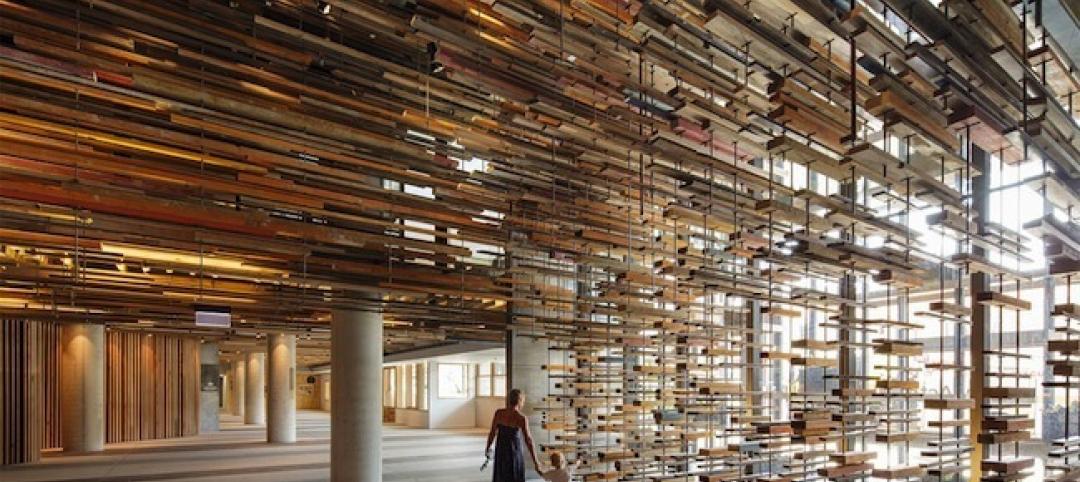Their clients don’t expect the hospitality sector to fully recover from the coronavirus outbreak for at least two years. And while AEC firms serving this sector say they’ve restarted hotel projects that had been put on hold during the pandemic, they also foresee mostly renovation and adaptive reuse, rather than new construction, in their immediate futures.
“Compared to other sectors, hospitality is probably only better than retail at this point,” says Bob Winter, PE, Director of Hospitality for the engineering consultant IMEG.
Even PCL Construction—which as of early June was working on 39 hotel/resort projects, including a first-of-its-kind immersive adventure resort, Star Wars: Galactic Starcruiser at Disney World in Florida—expects the negative impact from COVID-19 to “linger for years,” says Bob Hopferberg PCL’s Vice President of National Business Development.
Some firms say they are girding for a spate of hotel foreclosures over the next 12 to 18 months. Distressed and half-built assets will be in demand among private equity firms, and some of these properties will likely be renovated and converted to multifamily, mixed use, or student housing.
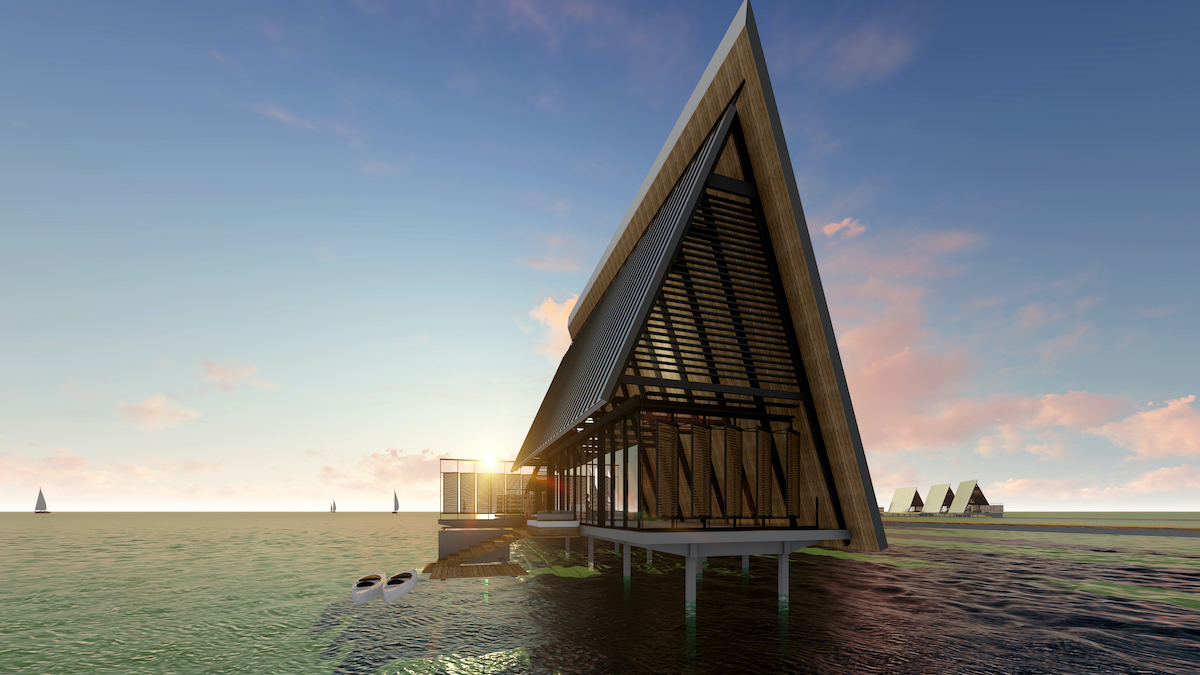
To save time and money, more hotel building teams are turning to prefabrication and modular construction. HKS evaluated more than 15 manufacturers with modular and industrialized construction capabilities to discover the most advantageous solutions for recent design projects such as prefab bungalows for a private island resort. Courtesy HKS
While HKS sees the prospects for new hotel construction in the remainder of 2020 as “bleak,” it is also seeing positive signs for renovations meant to reposition existing buildings. “The mixed-use developments that have a residential component continue to show good health,” say Luis Zapiain, HKS’s Director of Hospitality, and Jennifer Dohrmann-Alpert, its Senior Hospitality Advisor.
“Most hotel owners and operators are looking at strategies that do not require physical architectural changes,” observes Nancy J. Ruddy, Founding Principal and Director of Interior Design with CetraRuddy in New York. She’s seeing hotels planning soft reopenings that span over three months, after which owners will reassess what’s working over six- and 12-month intervals until a vaccine is available.
Renovation projects to make hotel guests feel safe
Hotel survival is all about rebuilding guests’ confidence about their safety, and their comfort about traveling again. HKS created a document that provides guidelines for welcoming guests back, with a priority on safety and wellbeing. “Operational procedures have been changed, likely permanently, affecting everything from check-in/registration, housekeeping, room service, food and beverage, and use of amenities,” adds Tom Philippi, AIA, NCARB, LEED AP, Design Principal at SmithGroup’s Dallas office.
Hotels desperate to win back customers are now engaged in what Randy Shelly, Executive Vice President–Hospitality for Shawmut Design and Construction, calls a “competition for cleanliness.” As a result, Shelly expects the renovation cycle for existing hotels to shorten after the pandemic, which might ultimately help hotels increase their revenue per available room.
The biggest change occurring at hotels is the increasing importance of their food and beverage offering. “When designing hotels, one of the first questions is: How can we bring F+B into this space? We expect to see more areas in the hotel become flexible spaces to dine informally. The entire hotel could become a great F+B experience,” says Bob Neal, a Principal with Cooper Carry’s Hospitality Studio. He, like other AEC sources, is seeing a spurning of buffets (which are highly profitable but can be infection traps) in favor of prepackaged room service and grab-and-go areas in lobbies and corridors.
The other prominent renovation trends for hotels is creating a touchless environment that minimizes the spread of air- and liquid-borne diseases. For that effort, “technology is coming front and center,” says Ruddy. Guest rooms will include enhanced in-room technology to accommodate guests who want to spend more time in their rooms working or relaxing.
In June, the hotelier citizen M introduced safety standards that include a mobile app that allows guests to create a keycard they can use to get into their rooms, order food, and control their in-room environment. The app streamlines contactless check-in/out, payments, and in-room service requests.
“We see hotels and resorts developing more ‘touchless’ interactions at all levels,” says Chad Wisler, PE, LEED AP BD+C, Managing Principal at Vanderweil Engineers’ Boston office. These interactions range from front-of-house entrances to guests’ use of their mobile devices for their virtual room keys, charge accounts, and menu and amenity selections. “COVID-19 has forced this sector (and clients) to adopt this new paradigm,” says Wisler.
Technology will also play a bigger role in hotel sanitization. For example, PCL has developed what it calls a Hygiene Lighthouse, which deploys Far-Ultraviolet bulbs that can kill 99.99% of pathogens quicker and more efficiently than other UV or traditional methods for cleaning rooms, housekeeping carts, and bell carts.
But what hotel owners also need to be cautious about, warns IMEG’s Winter, is not allowing technology and cleanliness to make their properties bland, sterile, and impersonal in ways that dissipate “the social aspects that drive the business.”
Hotel design: A bigger push for prefab and modular options
As the hospitality sector claws its way back to something resembling normal, certain venue types could recover faster. Philippi of SmithGroup cites extended-stay and apartment-style hotels. Wisler of Vanderweil Engineers—which now leans toward design-assist delivery—thinks experience-based resorts and wellness retreats will be in demand. Shelly of Shawmut Design and Construction says hotels in New York are looking at their properties as “mini mixed-used developments” and are focusing on using “engaging public spaces” to connect with their surrounding neighborhoods. Shawmut is also seeing hotels in southern California redesigning spaces to activate revenue; he points specifically to the Four Seasons Westlake Village that turned lobby space into a bar and restaurant area.
CetraRuddy and SmithGroup are among the AEC firms that see connections to the outdoors and nature becoming more common to hotel/resort design and wellness programming.
ALSO SEE: Why clean is the new green in the U.S. hospitality sector
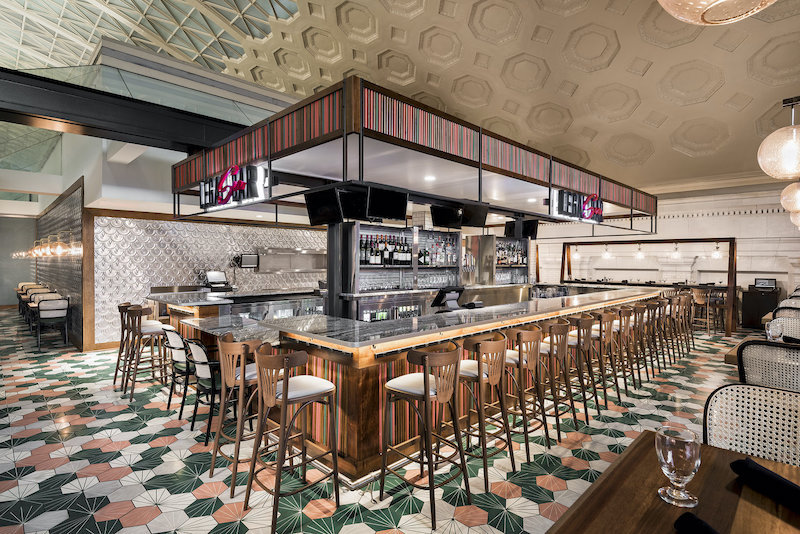
Three design firms share their takes on what will make customers more comfortable about returning. Read the article.
While luxury hotels foundered during the pandemic, firms like Shawmut and HKS believe affluent guests will eventually return to these venues. “On the bright side, investors are still buying hotels, and the focus has shifted to ultra-luxury or to limited service/select service properties,” observe Zapiain and Dohrmann.
They’re also seeing modular design “making waves” in the hospitality sector. HKS has been working with suppliers “to refine and develop their hospitality products” for recent projects that include prefab bungalows for a private island resort and a fully modular urban hotel in Anchorage, Alaska. HKS estimates that prefabricating guest rooms in factories can reduce a project’s schedule time by up to 50% and its construction budget by 20%.
Prefabrication “is a major push” in hospitality, concurs Matt Murphy, Commercial Core Market Leader with DPR Construction. Applications range from full modular units to prefab bathrooms, electrical rooms, and exterior skin systems. For AC Marriott in Phoenix, DPR used a prefab structural system from Digital Building Components; the JW Marriott in Charlotte, N.C., features prefab bathrooms from SurePods. “We anticipate this trend will increase, post-pandemic, as contractors look at ways to limit on-site labor and the challenges of COVID-19 prevention measures such as social distancing,” says Murphy.
Related Stories
| Jun 18, 2014
Arup uses 3D printing to fabricate one-of-a-kind structural steel components
The firm's research shows that 3D printing has the potential to reduce costs, cut waste, and slash the carbon footprint of the construction sector.
| Jun 13, 2014
First look: BIG's spiraling museum for watchmaker Audemars Piguet
The glass-and-steel pavilion's spiral structure acts as a storytelling device for the company's history.
| Jun 12, 2014
Austrian university develops 'inflatable' concrete dome method
Constructing a concrete dome is a costly process, but this may change soon. A team from the Vienna University of Technology has developed a method that allows concrete domes to form with the use of air and steel cables instead of expensive, timber supporting structures.
| Jun 11, 2014
Bill signing signals approval to revitalize New Orleans’ convention center corridor
A plan to revitalize New Orleans' Convention Center moves forward after Louisiana governor signs bill.
| Jun 9, 2014
Green Building Initiative launches Green Globes for Sustainable Interiors program
The new program focuses exclusively on the sustainable design and construction of interior spaces in nonresidential buildings and can be pursued by both building owners and individual lessees of commercial spaces.
| Jun 2, 2014
Parking structures group launches LEED-type program for parking garages
The Green Parking Council, an affiliate of the International Parking Institute, has launched the Green Garage Certification program, the parking industry equivalent of LEED certification.
| May 30, 2014
Developer will convert Dallas' storied LTV Building into mixed-use residential tower
New Orleans-based HRI Properties recently completed the purchase of one of the most storied buildings in downtown Dallas. The developer will convert the LTV Building into a mixed-use complex, with 171 hotel rooms and 186 luxury apartments.
| May 29, 2014
7 cost-effective ways to make U.S. infrastructure more resilient
Moving critical elements to higher ground and designing for longer lifespans are just some of the ways cities and governments can make infrastructure more resilient to natural disasters and climate change, writes Richard Cavallaro, President of Skanska USA Civil.
| May 28, 2014
Must see: Check out this one-of-a-kind lobby covered with 2,150 pieces of reclaimed wood
The recently opened NewActon Nishi apartment complex in Canberra, Australia, features one of the more unique lobby spaces you'll see, with thousands of pieces of repurposed timber suspended from the walls and ceiling.
| May 23, 2014
Top interior design trends: Gensler, HOK, FXFOWLE, Mancini Duffy weigh in
Tech-friendly furniture, “live walls,” sit-stand desks, and circadian lighting are among the emerging trends identified by leading interior designers.






